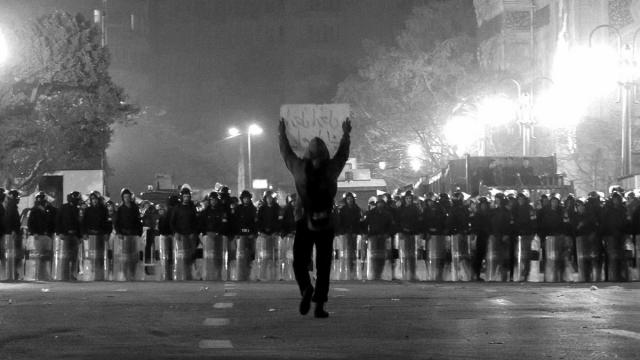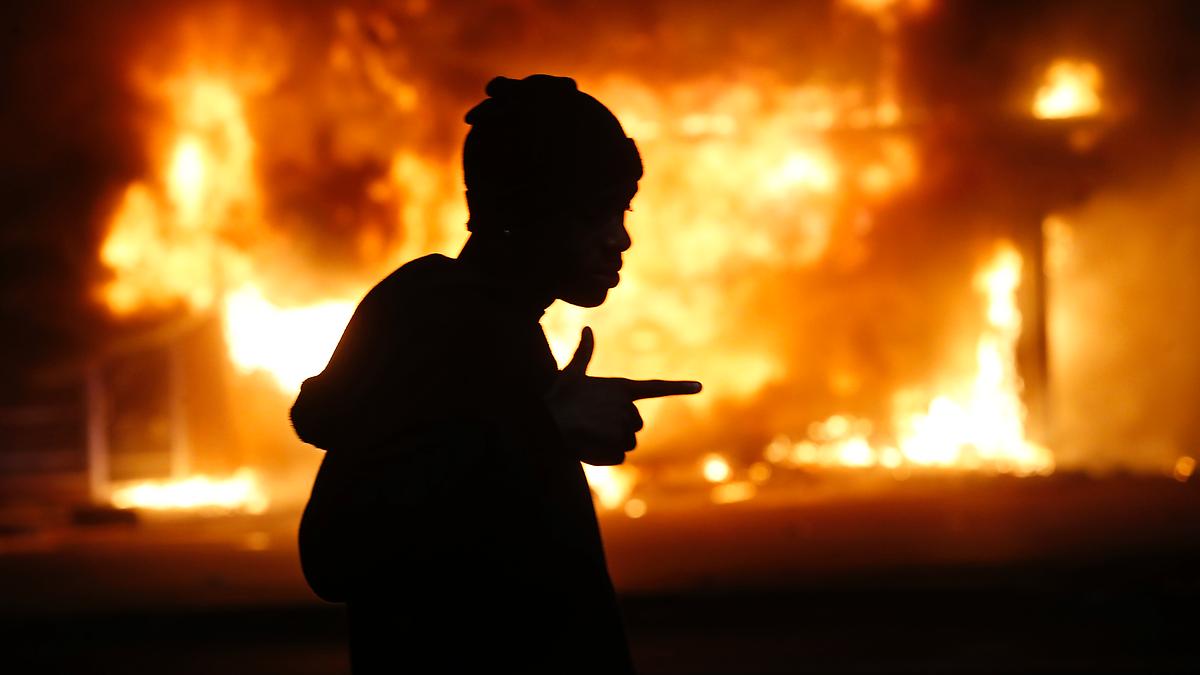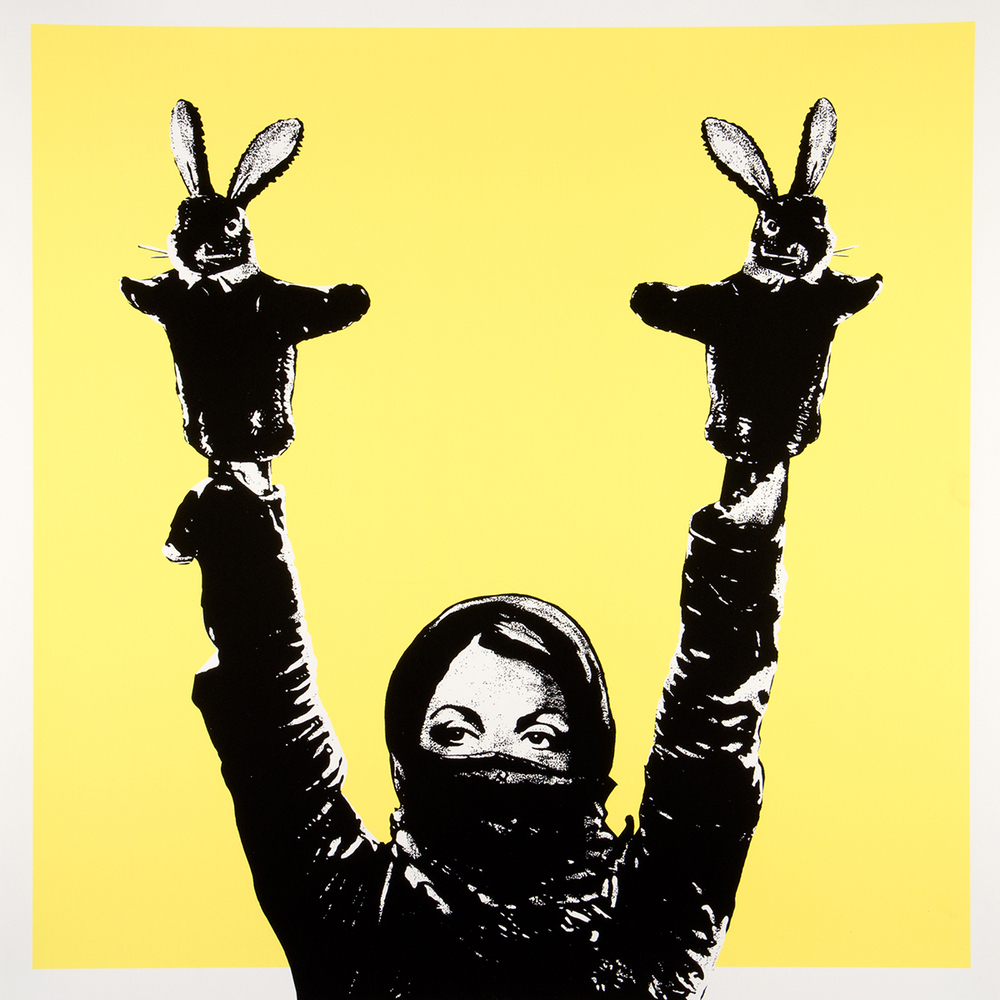
In 2011, Time Magazine selected “the protester” as its person of the year. Perhaps “person of the decade” would have been a more accurate depiction.
We live in tumultuous times. Since 2011, every year seems to have brought more protests, more rebellions, more uprisings — and 2014 has been no different in this respect. Indeed, the past year has seen some of the most spectacular mass mobilizations and some of the most persistent social unrest to date. A genie has been unleashed from its bottle and refuses to go back in.
At the same time, it is clear that the days of innocence are over. There is less patience for drum circles or endless deliberations over process. Faced with a relentless assault by the neoliberal state, protesters now simply seek to secure some of the most elementary ingredients of a just, humane and democratic society.
Millions have marched to demand answers in the case of the missing 43 students in Mexico, to secure justice for unarmed people of color murdered by racist police in the U.S., to express solidarity with the heroic Kurdish defenders of Kobani, to save the lives of hunger-striking prisoners in Greece, to resist draconian new anti-protest laws in Spain — and the list keeps on growing.
We have learned as well. We have all seen that, in many parts of the globe, the hopeful uprisings of recent years have taken a decisive turn for the worse. In Egypt, the vicious counter-revolution that took off in earnest in 2013 was solidified with the election of the U.S.-backed tyrant Abdel Fattah el-Sisi this year, culminating in the recent acquittal of the former dictator Mubarak himself.
Meanwhile in Syria, three years of civil war and state brutality have given rise to a monster — the self-styled Islamic State — which went on a rampage through Iraq and Kurdistan over the summer. In Egypt, Libya and elsewhere similar extremist forces are on the rise. Revolutions are not to be taken lightly.
In many respects, 2014 was a very dark year. Between Israel’s monstrous war on Gaza to the shooting down of a civilian aircraft over the Ukraine, and from the world’s appalling inaction in the face of the ebola outbreak in West Africa on to the thousands of migrants who drowned off the Mediterranean coast this year, there seemed to be little to be hopeful or excited about. Some of the most spectacular mobilizations, from the Euromaidan revolt in Ukraine and the royalist rebellion and military coup in Thailand to the middle class protests that rocked Venezuela, originated not from the left but from the right.
But 2014 also witnessed the steady rise of new progressive forces. In Greece, the conservative-led government just collapsed over its failure to appoint a new president, triggering snap elections to be held on January 25, with the radical left party Syriza slated to win. In Spain, meanwhile, the new leftist party Podemos was founded in January to compete in the European elections, and now, less than a year later, already finds itself catapulted into first position in the polls. Spanish activists hopefully observe that “the fear is changing sides.” In 2015, the European austerity doctrine will face its most serious challenge to date.
The most inspiring actions, however, continue to be those led by ordinary people clamoring for justice and dignity in the streets. This year, Mexico witnessed its largest street demonstrations since ’68 and the most serious challenge to President Peña Nieto and the PRI. Hong Kong saw the birth of a serious pro-democracy movement, in many ways one of the most significant protests in Chinese-controlled territory since the 1989 Tiananmen square revolt. Brazilians continued to take to the streets in the millions during the World Cup, while Bosnians — transcending deep-seated ethnic cleavages — briefly erupted into a full-blown workers’ revolt earlier this year.
At the same time, the United States has been experiencing an outright anti-police and anti-racist revolt following the police murder (and the subsequent acquittal of the killers) of Michael Brown in Ferguson and Eric Garner in New York. The St. Louis suburb in particular witnessed a small-scale urban insurrection during the summer while the Bay Area has lived up to its reputation as a hotbed of radical activism and black liberation with a series of marches, protests and clashes in the past month. New York has been mobilizing in force for weeks now. Anti-police protests continue across the nation as I write these words, and are unlikely to subside anytime soon.
Still, all of the above clearly pales in comparison to the heroic struggle the Kurds have been waging this year, beating all odds to drive ISIS out of the capital of their self-governed canton of Kobani. Of course the context of the Syrian civil war — no doubt the bloodiest in decades — makes the Kurdish case incomparable to the situation other movements find themselves in. For all the stories of heroism and tales of revolution emanating from Rojava, it is clear that Kurdish advances remain precarious in the face of the fascist ambitions of ISIS, the imperial ambitions of the US-led coalition and the regional ambitions of Turkey, Iran and Saudi Arabia. Yet the Kurdish experiment in democratic autonomy still stands tall as a shining beacon of hope in a desert of despair.
Looking back, if 2014 has shown us anything it is that none of the structural causes that gave rise to the post-2011 cycle of struggles have ever been truly addressed. In many ways, as the world financial system and global economy continue to careen into the abyss, while state violence is ramped up in order to deal with the increasing social unrest in response to ever widening social inequalities, the worldwide wave of mass protests and outright revolts is only likely to further intensify. In fact, it now looks like the only effective strategy capable of restoring a sense of “order” to the ancien regime is the Egyptian approach: to sacrifice all democratic pretensions with outright state repression in order to instill an all-pervasive sense of despondence and hopelessness.
For a while in early 2014, the world appeared to be going down the latter road — towards ever greater despondence and demobilization. But recent months have provided hope that other outcomes may still be possible, not just in Europe, Asia and the Americas but even in the midst of the horrors of the new Middle Eastern wars. Indeed, it seems that the winds of change are slowly picking up again. Around the globe, grassroots movements appear to be re-finding their footing. What if 2011 was really only just the beginning? The mere thought triggers goosebumps. If 2014 was anything to go by, the decade of the protester may yet be ahead of us. And who knows what possibilities may still lie beyond?
3 WAYS TO SHOW YOUR SUPPORT
- Log in to post comments
















